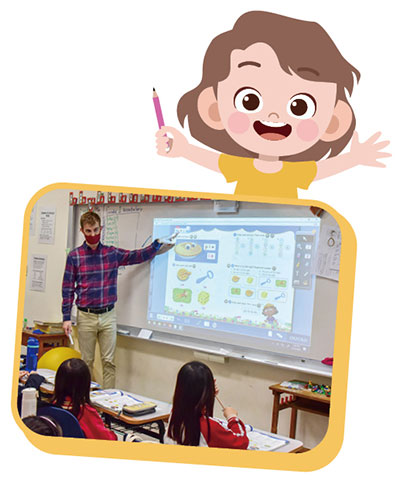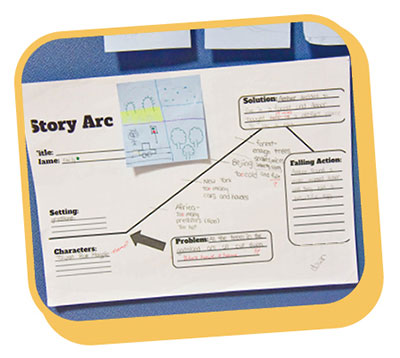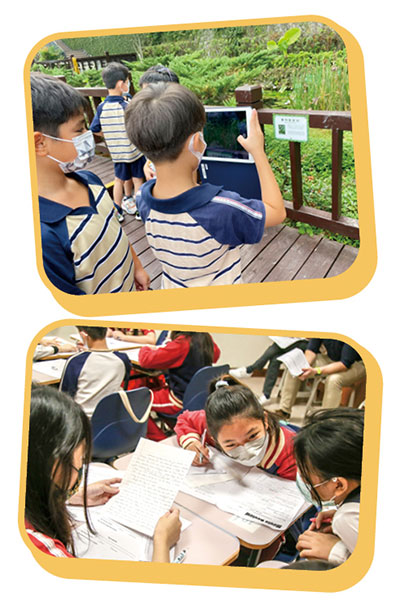

~ Zachary Warmke
Curriculum Coordinator, International Department
● Guided Education in Writing at KCIS
The English curriculum at KCIS has been developed using modern scientific research in bilingual education. It balances the four language skills: reading, writing, speaking, and listening. Of these skills, writing is the most challenging. In this article, we will discuss our methods for guiding students to master English writing.
● Foundational Writing Skills
Young students learn phonics. Phonics focuses on the relationship between letters and sounds. It is important for students to practice writing individual letters until they start to automatically understand the connection between letters and sounds. This takes time and practice, so we introduce new phonics structures over the first three years of school.

Meanwhile, we steadily increase the difficulty level of our writing assignments. By second grade, students should be able to write a complete sentence, including a capital letter and punctuation. In third grade, they should write several sentences. By fourth grade, they make full paragraphs. Finally, by the time students are ready to graduate, we expect them to write multiple well-organized paragraphs independently.
Achieving these goals takes planning and structure. Our curriculum involves many different parts, but the most important part for this is projects. Projects are how students can best express their writing skills.
● Guidance and Support
All of our projects involve research which leads to a meaningful writing task. These are designed with a guided writing structure. We consider factors as being either top-down or bottom-up. Top-down factors are big ideas like the theme of a project. Bottom-up factors are the details like writing prompts, templates, and research documents teachers use. Here are two examples that show how teachers carefully guide students in different grades:


In the second grade project A Walk in Nature, students research plants that live in our Nature Study Area. They use a simple research organizer to take notes. Then teachers help students convert their notes into complete sentences. Finally, they help students organize sentences into thematic sections. This method improves students’ compositions while also introducing them to editing and revising skills.
In the sixth grade Movie Review project, students can already write full paragraphs, so teachers don’t guide their writing directly. Instead, they teach students how well-organized paragraphs make their writing better. Students share opinions about any movie they choose, so they are motivated to write a lot. Teachers help them make their writing flow smoothly by teaching them about topic and detail sentences. In this way, teachers do not give students a structure to follow, but rather teach them how to create a better structure by themselves.
● Achieving Our Goals
Other than projects, our students write for spelling and phonics homework, grammar workbooks, and Language Arts Workbooks. All of these follow a guided writing structure so that students reach appropriate standards. Younger learners focus on mastering the basics so they can grow into accomplished experts by grade six.
We are proud of the progress our students make. Their work can be seen all around our school on teachers’ bulletin boards, in our theme wall displays, as digital presentations in the English Village, and more. It is amazing to see their growth while learning writing at Kang Chiao.
From the Editor
Becoming Accomplished Writers
國際處主任 賴國宜
For most students, writing is mainly worksheets, tests, and assignments. However, at Kang Chiao, writing is a powerful tool for learning and critical thinking. Through writing, we make our thinking visible. Our curriculum coordinator, Mr. Warmke explains how the English curriculum connects reading to writing through project-based learning. Reading exposes students to new concepts and perspectives, expands their knowledge of language and illustrates models of excellent writing. The process of project inquiry allows them to think critically and analytically. We believe that for children, learning to write is a journey of learning to express themselves logically and concisely. So next time your child shares their writing with you, keep on providing your encouragement and positive feedback. It will motivate them to continue to learn and grow.
良好的寫作技巧能幫助我們以清晰、簡潔的方式傳達想法或情感,因此,不論是在學或將來就業,具備有效的寫作能力,對人生每個階段都有深遠的影響。康橋的英語課程以專題融入的方式將閱讀與寫作連結,我們相信閱讀可以促進寫作,閱讀除了讓孩子認識世界,也培養孩子敘事和論述的語感,優良的文學作品更提供孩子發展寫作技巧的養分。專題探究和創造的過程,協助孩子發展更高層次的思考能力,如分析、綜合、評估及詮釋,專題探究習得的知識也能豐富寫作的內涵。本期邀請課研組長Mr. Warmke闡述從字母的學習到段落寫作,我們如何幫助學生建構英文寫作能力。下次當孩子與您分享其作品時,請抱著喜悅的心情參與,多給孩子鼓勵與讚美,那會是他們願意繼續學習的最大動力。
本期我們還邀請英語辯論社分享他們最近辯論的題目「是否應允許13歲以下的兒童使用社交媒體」,他們做了很多研究,正反方都提出很好的見解,辯論就像是讓頭腦做體操,訓練從不同的角度看待事情,推薦給家長和孩子們在家一起閱讀,看看您贊成哪一方的論點。
學期即將結束,祝福所有的康橋家庭寒假充實愉快,新年快樂!